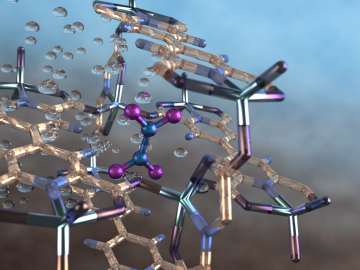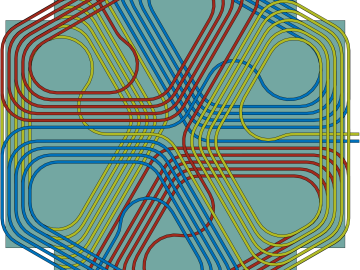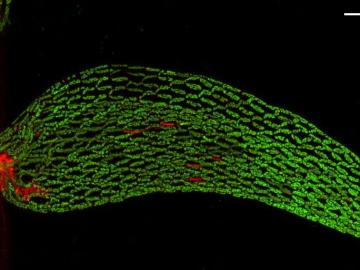
Filter News
Area of Research
- Advanced Manufacturing (7)
- Biological Systems (1)
- Biology and Environment (50)
- Building Technologies (2)
- Computational Engineering (1)
- Computer Science (3)
- Energy Science (118)
- Energy Sciences (1)
- Fusion and Fission (2)
- Fusion Energy (1)
- Isotopes (2)
- Materials (36)
- Materials for Computing (7)
- Mathematics (1)
- National Security (12)
- Neutron Science (12)
- Nuclear Science and Technology (4)
- Sensors and Controls (1)
- Supercomputing (32)
- Transportation Systems (2)
News Type
News Topics
- (-) Bioenergy (42)
- (-) Clean Water (16)
- (-) Composites (23)
- (-) Environment (86)
- (-) Frontier (17)
- (-) Molten Salt (8)
- (-) Security (13)
- (-) Transportation (62)
- 3-D Printing/Advanced Manufacturing (83)
- Advanced Reactors (25)
- Artificial Intelligence (51)
- Big Data (25)
- Biology (47)
- Biomedical (28)
- Biotechnology (14)
- Buildings (36)
- Chemical Sciences (48)
- Computer Science (105)
- Coronavirus (28)
- Critical Materials (23)
- Cybersecurity (20)
- Education (3)
- Element Discovery (1)
- Emergency (1)
- Energy Storage (75)
- Exascale Computing (14)
- Fossil Energy (2)
- Fusion (27)
- Grid (38)
- High-Performance Computing (44)
- Hydropower (6)
- Irradiation (2)
- Isotopes (25)
- ITER (5)
- Machine Learning (27)
- Materials (96)
- Materials Science (90)
- Mathematics (3)
- Mercury (5)
- Microelectronics (1)
- Microscopy (28)
- Nanotechnology (41)
- National Security (21)
- Neutron Science (81)
- Nuclear Energy (47)
- Partnerships (33)
- Physics (30)
- Polymers (23)
- Quantum Computing (18)
- Quantum Science (43)
- Simulation (19)
- Space Exploration (13)
- Statistics (2)
- Summit (30)
Media Contacts

The prospect of simulating a fusion plasma is a step closer to reality thanks to a new computational tool developed by scientists in fusion physics, computer science and mathematics at ORNL.

Energy storage startup SPARKZ Inc. has exclusively licensed five battery technologies from the Department of Energy’s Oak Ridge National Laboratory designed to eliminate cobalt metal in lithium-ion batteries. The advancement is aimed at accelerating the production of electric vehicles and energy storage solutions for the power grid.

Oak Ridge National Laboratory researchers created a geothermal energy storage system that could reduce peak electricity demand up to 37% in homes while helping balance grid operations.

To better determine the potential energy cost savings among connected homes, researchers at Oak Ridge National Laboratory developed a computer simulation to more accurately compare energy use on similar weather days.

Gina Tourassi has been appointed as director of the National Center for Computational Sciences, a division of the Computing and Computational Sciences Directorate at Oak Ridge National Laboratory.

A technology developed at the ORNL and scaled up by Vertimass LLC to convert ethanol into fuels suitable for aviation, shipping and other heavy-duty applications can be price-competitive with conventional fuels

An international team of scientists, led by the University of Manchester, has developed a metal-organic framework, or MOF, material

ORNL researchers created and tested new wireless charging designs that may double the power density, resulting in a lighter weight system compared with existing technologies.

A team of scientists found that critical interactions between microbes and peat moss break down under warming temperatures, impacting moss health and ultimately carbon stored in soil.

Researchers at the Department of Energy’s Oak Ridge National Laboratory have received five 2019 R&D 100 Awards, increasing the lab’s total to 221 since the award’s inception in 1963.


